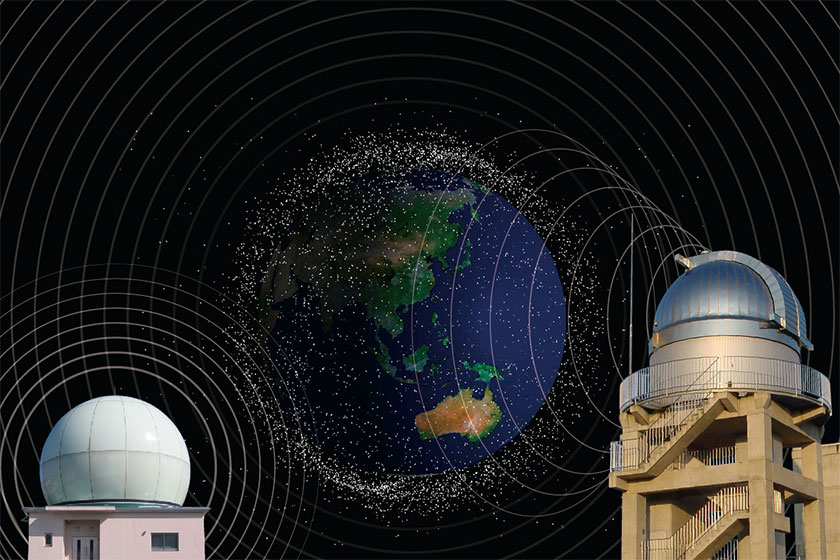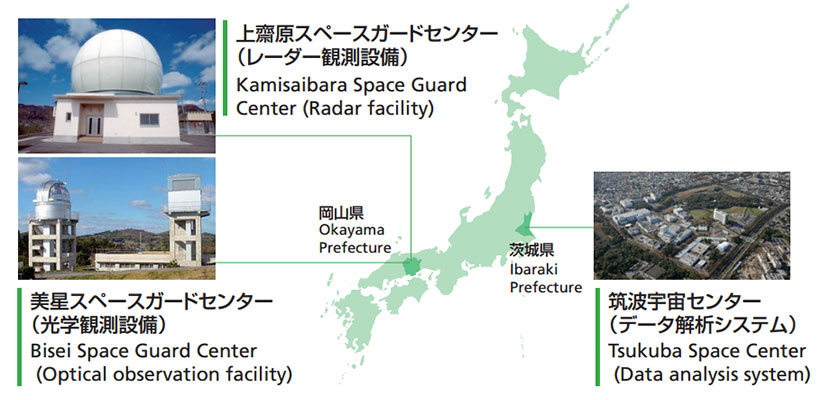|
Satellites are now part of our imperative infrastructure to support our
daily lives such as weather forecasts, disaster monitoring, mapping
applications, and so on. However, as of 2017, almost 20,000 artificial
objects are known to be traveling around the satellites at a high
speed of several kilometers per second, and the number of such
objects is increasing. These items are called “space debris” including
used satellites and rockets and their fragments. Space debris poses
serious threats of colliding with satellites and astronauts as well as
crashing down to Earth. |
 |
|---|
Safer Space
We will construct the following three facilities to understand space debris more accurately:
- Radar to observe the low orbit range of 200 to 1,000 km, closer to the Earth (orbit of Earth observation satellites etc.)
- Optical telescope to observe the high orbit range of 36,000 km (orbit of communication and weather satellites etc.)
- Analysis system to understand orbits of space debris, their approach to satellites, and their atmosphere re-entry
When the above three work together as one, our understanding of the area where many satellites are operating will be deepened, so that we will promote “making space visible.”
Japan’s Technology
By maximizing Japan’s technological prowess, we will:
- improve observation capability (for example a radar will be able to observe 10 cm class objects compared to the current 1.6-meter at an altitude of 650 km),
- increase observation frequency (from 200 times per day to 10,000) and
- enhance the processing capacity (for automatic observation planning).
With the above renovations, we will achieve “making space visible”through Japan’s technology
For All of Us
By promoting to “make space visible,” we will accurately understand the conditions of space debris and reduce their collision risks to protect our satellites that are imperative to our lives. We continue our research and development to improve our ability, and achieve a “Safer Space for All (SSA)” through “Space Situational Awareness (SSA).”
SSA facilities

Major specifications
| Radar | Observation capacity | 10 cm class (at an altitude of 650 km) |
|---|---|---|
| Number of observable objects at once | Up to 30 | |
| Optical telescope | Detection limit grade | 1 m telescope: about 18 grade |
| 50 cm telescope: about 16.5 grade | ||
| Analysis system | Number of targets | Maximum 100,000 objects |
| Amount of observation data (Radar) | 10,000 paths/day | |
| Compiling an observation plan etc. | Automatic processing |